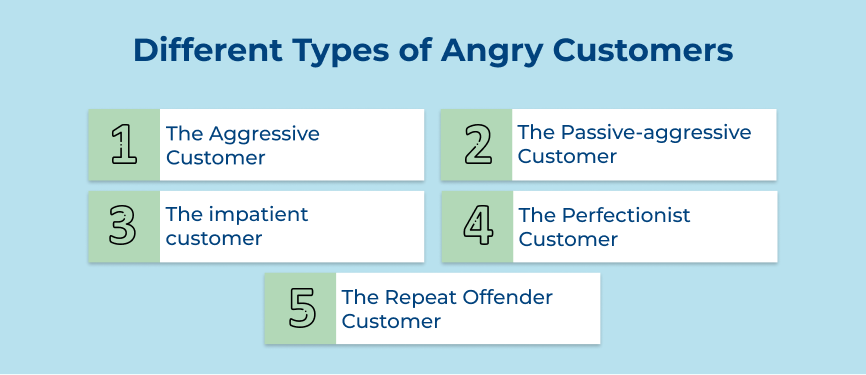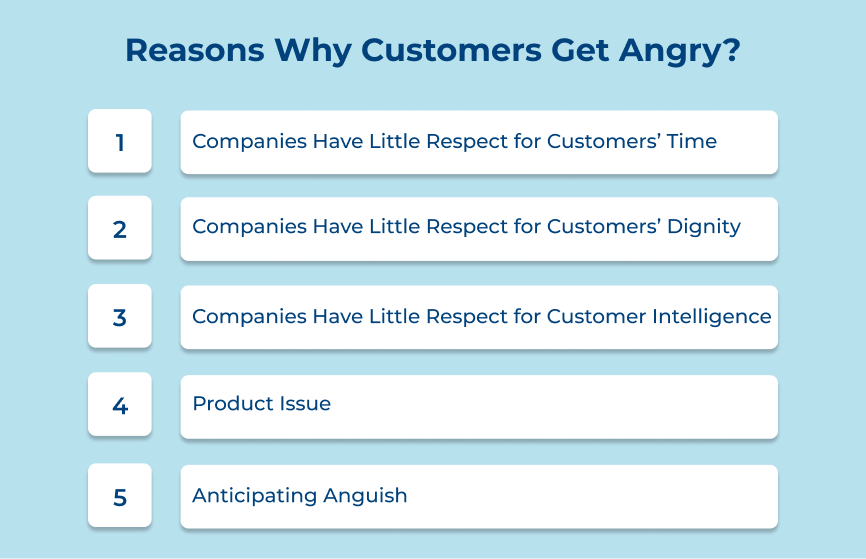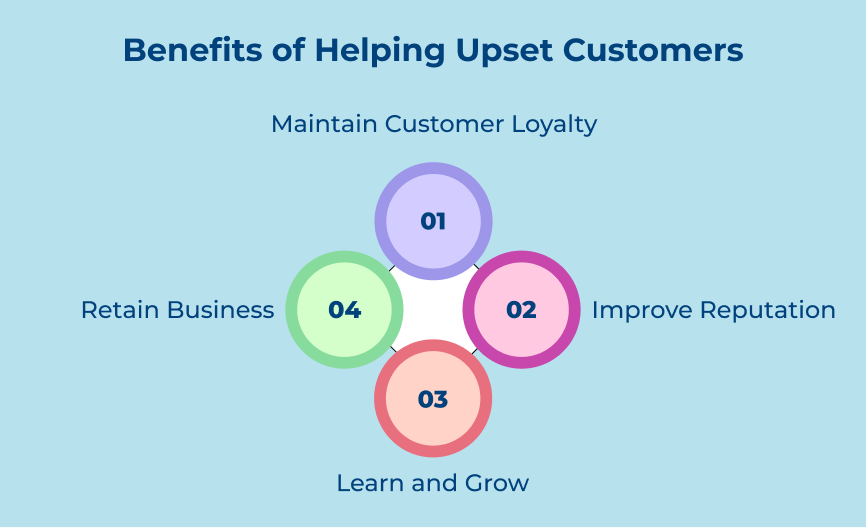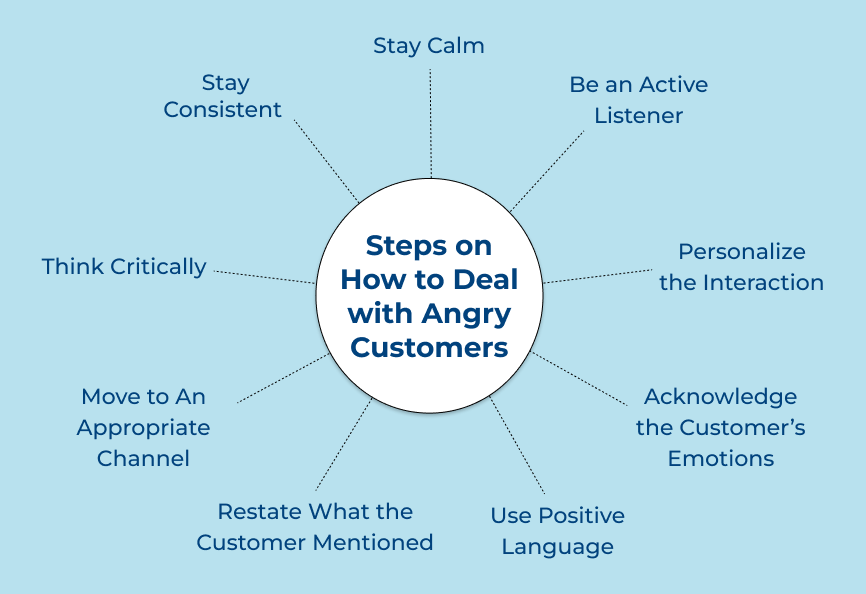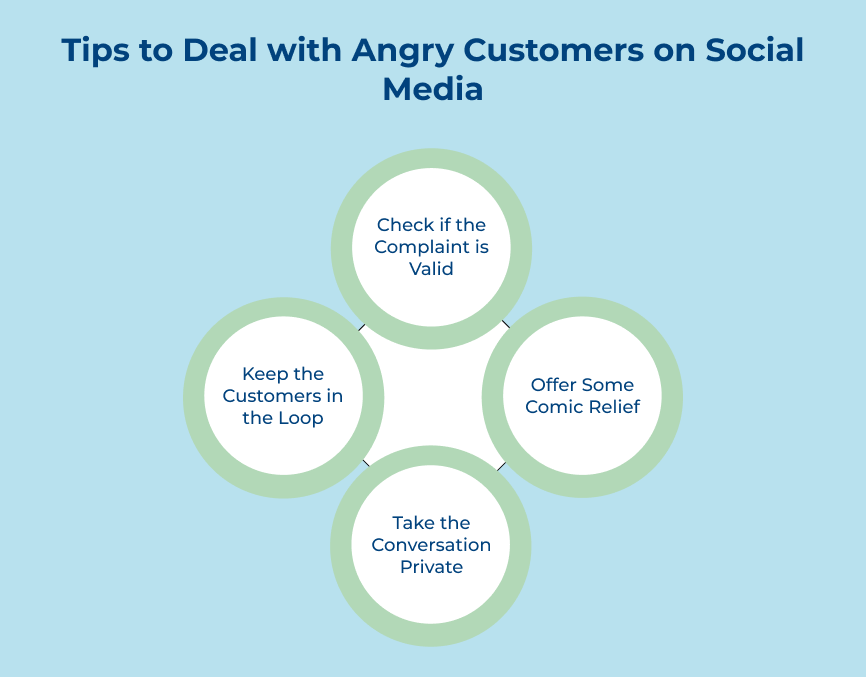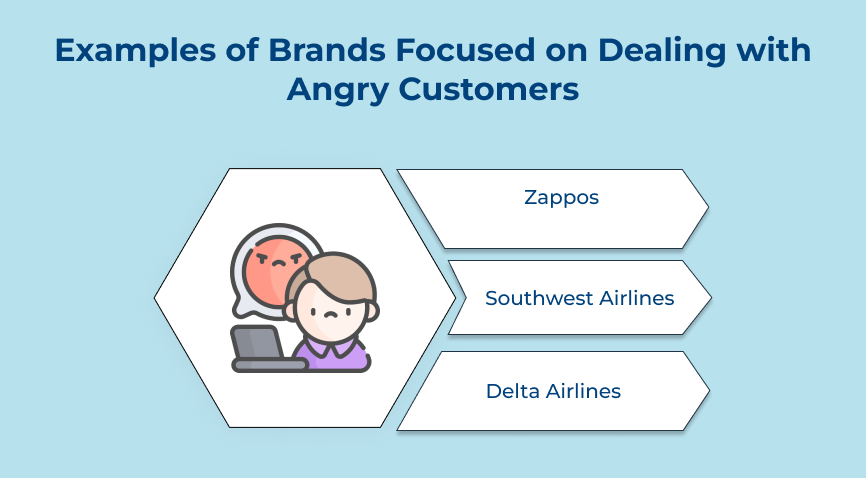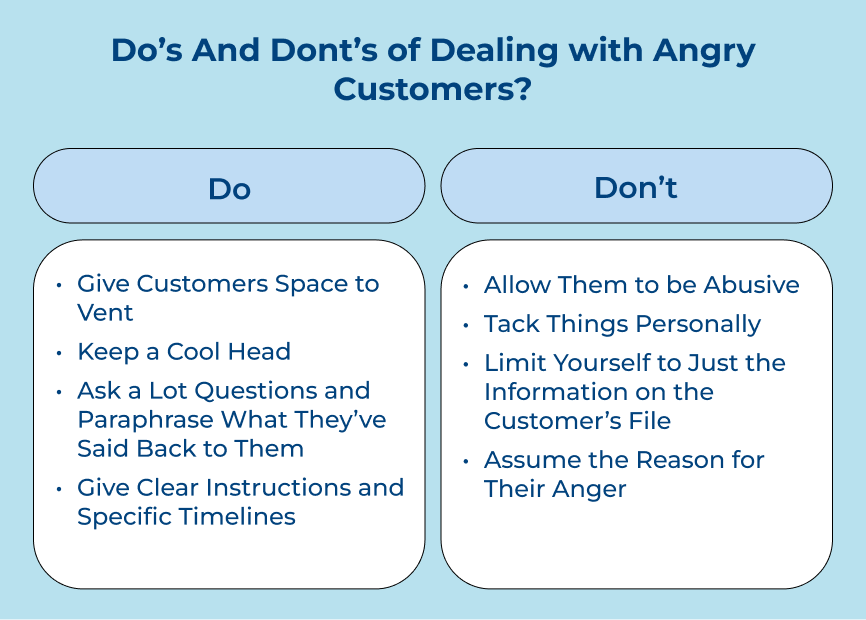1. Stay Calm
Dealing with angry customers can be a challenging part of any business, but it is crucial to handle the situation effectively to maintain a positive relationship. The first step in dealing with angry customers is to stay calm. Staying calm helps to de-escalate the situation and prevent it from escalating further.
When a customer is angry, they may be looking for a reaction and staying calm sends a message that the company is taking their concerns seriously. Let’s assume that a customer is upset about a product they purchased. Staying calm can help to address their concerns professionally and find a resolution.
Best practice:
- Take deep breaths and count to 10 before responding to the customer.
- Listen actively to the customer’s concerns without interrupting them.
- Empathize with the customer and acknowledge their feelings before offering a solution.
2. Be an Active Listener
Actively listening to the customer’s concerns, shows that the brand cares and is willing to help resolve the issue. The step is all about giving the customer’s full attention, acknowledging their feelings and demonstrating empathy.
Let’s consider a customer who is upset about receiving a faulty product. Businesses can empathize by saying, “I understand your frustration. Let’s work together to resolve this issue promptly.”
Best practice:
- Maintain eye contact and nod frequently to demonstrate active engagement in the conversation
- Repeat what the customer is saying to ensure that the company understands their concerns correctly.
- Ask open-ended questions to encourage the customer to further explain their problem and provide more details for a better resolution.
3. Personalize the Interaction
When dealing with angry customers it is crucial to personalize the interaction to show that the company cares about their concerns. It shows the commitment to finding a satisfactory resolution. Personalizing interactions builds rapport, de-escalates situations and transforms negatives into positives with customers. 76% of customers said personalized messages were essential in enhancing their consideration of a brand.
Let’s assume a customer is unhappy with a product they purchased. Businesses can address unhappy customers by acknowledging their dissatisfaction. They can apologize and offer solutions like refunds or replacements.
Best practice:
- Use the customer’s name when addressing them to make the interaction more personal.
- Take the time to understand the root cause of their anger and address it directly.
- Follow up with the customer after resolving their issue to ensure their satisfaction and maintain a positive relationship.
4. Acknowledge the Customer’s Emotions
Acknowledge angry customers’ emotions to diffuse situations effectively. Handling angry customers is to acknowledge their emotions. Demonstrating empathy and understanding towards customer feelings show the company’s commitment to resolving concerns.
Acknowledging the customer’s emotions helps to build trust, showing that the company is listening and taking their concerns seriously. Validating their emotions can de-escalate the situation and open up a pathway for constructive dialogue.
Best practice:
- Use active listening techniques to show that the company is fully engaged in the conversation.
- Offer a genuine apology to show empathy towards the customer’s situation.
- Provide solutions or alternatives to address the customer’s concerns and show that the company is committed to resolving the issue.
5. Use Positive Language
When handling angry customers, use positive language to defuse the situation effectively. Using phrases such as “I understand the frustration” or “I appreciate the feedback” can help to show empathy towards the customer and make them feel heard. Avoid using negative language or blaming the customer. It can escalate the situation further.
Let’s assume, instead of saying “You are wrong”, it can be rephrased by saying, “Let’s work together to find a solution.”. It shows that the company is willing to work with the customer to find a resolution.
Best practice:
- Stay calm and remain positive throughout the interaction.
- Use active listening to show the customer that the company is paying attention to their concerns.
- Offer solutions and options to help positively resolve the issue.
6. Restate What the Customer Mentioned
When handling upset customers, demonstrating empathy and understanding is crucial. Restating what they have told, is a crucial step in effective customer service. It shows that the company is actively listening and that their feelings are acknowledged. Restating what the customer has told helps to clarify any misunderstandings and ensures that the business has a clear understanding of the issue.
Paraphrasing their concerns demonstrates that the business is paying attention and is committed to finding a resolution. Let’s consider, if a customer is upset about a delayed delivery, the business can restate their frustration by saying, “I understand the disappointment that the package did not arrive on time. Let me see what I can do to help.”
Best practice:
- Use active listening skills to demonstrate that the brand is fully engaged in the conversation.
- Show genuine concern and empathy towards the customer’s situation.
- Offer reassurance that the business is committed to resolving its issue on time.
7. Move to An Appropriate Channel
Moving to an appropriate channel is a crucial step in effectively dealing with angry customers. Moving the conversation to an email or a phone call allows for a more personalized response. It can help prevent the situation from escalating further and show the customer that their concerns are being taken seriously.
Let’s assume a customer is expressing frustration on a public social media platform. It is best to publicly acknowledge the customer’s frustration and then move the conversation to private for personalized solutions.
Best practice:
- Always respond quickly to angry customers to show that the brand is actively working to resolve the issue.
- Show empathy and be understanding in communication to value the customer’s experience.
- Provide a clear timeline for when the issue will be resolved to manage the customer’s expectations effectively.
8. Think Critically
When handling upset customers, think critically to address their concerns and find solutions effectively. Critical thinking allows one to analyze the situation, consider different perspectives and make informed decisions. Taking a step back and critically examining the root cause of the customer’s anger can help better understand their point of view.
Let’s consider if a customer is upset because their order arrived late, instead of simply apologizing, think critically about why the delay occurred. Was it a shipping issue, a product availability problem, or a miscommunication? Addressing the underlying issue can prevent similar situations in the future.
Best practice:
- Stay calm and listen to the customer’s concerns before responding.
- Ask clarifying questions to fully understand the problem.
- Brainstorm possible solutions and choose the best course of action based on the customer’s needs.
9. Stay Consistent
Consistency is key when dealing with angry customers. Staying consistent in communication can help build trust and credibility with the customer. It leads to a more positive resolution to the issue at hand. Consistency in the responses can help demonstrate to the customer that the brand is taking their concerns seriously and is committed to finding a solution.
Let’s assume, if a customer is upset about a delayed delivery, consistently updating and responding promptly can reassure them that the brand is addressing the issue.
Best practice:
- Clearly communicate what the customer can expect in terms of resolution timelines and next steps.
- Make sure to follow through on any commitments or promises made to the customer.
- Keep the communications professional and avoid getting defensive or emotional in their responses to the customer.
4 Tips to Deal with Angry Customers on Social Media
Here are four essential tips to help you deal with angry customers by turning tense interactions into trust-building opportunities.






